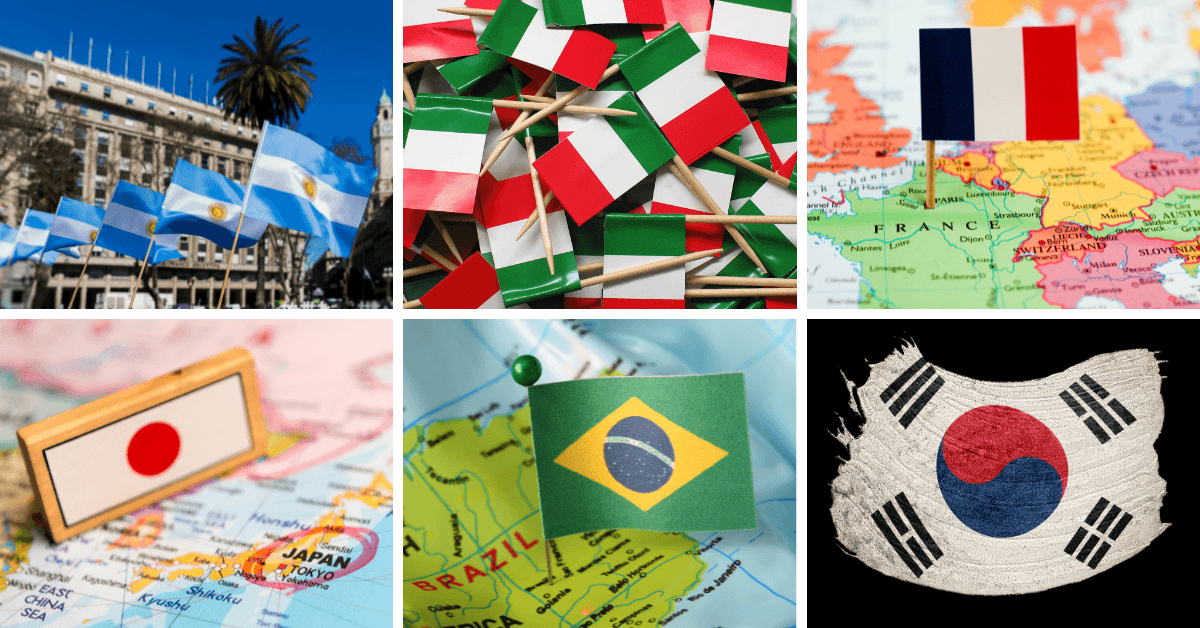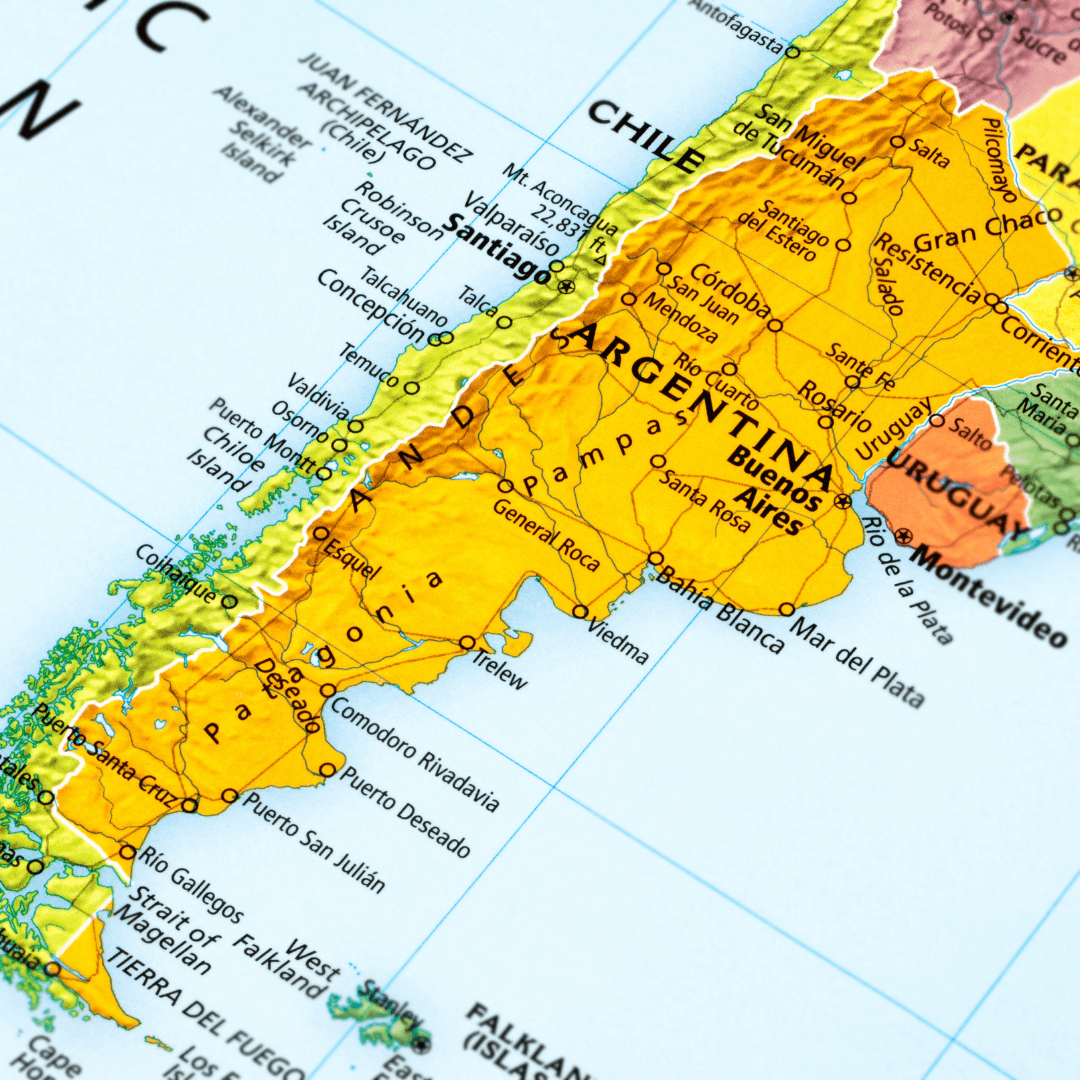Worst Countries For Vegetarians Worldwide

Worst Countries For Vegetarians Worldwide
Being a vegetarian can be more challenging in some countries than others due to cultural norms, limited food options, or lack of awareness.
Exploring the worst countries for vegetarians worldwide involves examining cuisine, dietary habits, and accessibility to vegetarian-friendly options.
In some countries, meat is deeply ingrained in culture and nutritional habits. Additionally, certain regions may need more infrastructure to support vegetarianism, resulting in limited fresh produce and meat alternatives.
Cultural attitudes towards vegetarianism can also play a significant role, with some societies viewing vegetarianism as unconventional or even frowned upon.
Let's delve into some of the places where being a vegetarian might pose considerable challenges.
How Many Vegetarians Are There Worldwide?
As a dietary choice, vegetarianism encompasses various degrees of restriction from meat and animal products.
Many factors influence this lifestyle, including cultural traditions, religious beliefs, ethical considerations, environmental concerns, and health motivations. Let’s explore how many vegetarians there are worldwide nowadays:
As of recent estimates, approximately 8% of the global population identifies as vegetarian, though this figure can vary greatly depending on the region and the specific definition of vegetarianism used.
In many parts of the world, particularly in South Asia, vegetarianism is deeply rooted in cultural and religious practices.
While certain regions embrace vegetarianism due to cultural and spiritual influences, others present significant challenges for meat-free diets.
Despite India's rich tradition of vegetarian cuisine, countries like Japan, France, and Argentina remain among the worst countries for vegetarians worldwide due to their heavy reliance on meat-based dishes.
However, South Asian countries like Thailand, Vietnam, and Sri Lanka stand out as more accommodating, with strong Buddhist influences promoting compassion towards animals and offering various vegetarian options.
Cultural contexts significantly influence the ease of maintaining a meat-free lifestyle across different regions.
Vegetarianism has risen in Western countries recently, driven by health, ethical, and environmental concerns.
While the percentage of vegetarians in these regions tends to be lower compared to Asia, interest in plant-based diets has surged.
In the United States, surveys suggest that around 5% of the population identifies as vegetarian, with an additional 3% following a vegan diet.
Health considerations are important when adopting a vegetarian lifestyle. Research shows that well-planned vegetarian diets can provide various health benefits, including a lower risk of heart disease, high blood pressure, type 2 diabetes, and certain types of cancer.
Vegetarian diets include fruits, vegetables, whole grains, nuts, and legumes high in fiber, vitamins, minerals, and antioxidants.
Ethical and environmental concerns also drive many individuals to embrace vegetarianism. The meat industry is associated with various moral issues, such as animal cruelty, inhumane treatment of livestock, and environmental degradation.
Livestock production causes enormous greenhouse gas emissions, deforestation, water pollution, and biodiversity loss.
By choosing plant-based diets, individuals can reduce their ecological footprint and align their food choices with their values of compassion and sustainability.
Despite the growing popularity of vegetarianism, challenges remain, especially in regions where meat consumption is deeply ingrained in the culture.
Finding vegetarian-friendly options in restaurants and grocery stores can be difficult, and social pressures may discourage individuals from adopting a meat-free diet.
However, as awareness spreads and more resources become available, the global vegetarian community will likely expand further in the coming years.
Worst Countries For Vegetarians Worldwide
Identifying the worst countries for vegetarians worldwide involves considering factors such as cultural norms, dietary habits, availability of vegetarian options, and overall acceptance of meat-free diets.
While every country presents its challenges, some places are particularly challenging for vegetarians due to a combination of these factors.
Let's explore some of these countries:

1. Japan
Japan presents significant challenges for vegetarians due to its deeply ingrained culture of seafood and meat consumption.
Finding suitable vegetarian options outside major cities can take time and effort. Traditional Japanese cuisine heavily relies on fish broth (dashi) and animal-based ingredients in many dishes, making it challenging for vegetarians to navigate menus.
Even seemingly vegetarian dishes may contain hidden animal products or derivatives. While urban areas may offer more diverse dining options, vegetarianism still needs to be widely understood and catered to in many establishments.
However, with the growing global interest in plant-based diets and increased awareness of dietary preferences, some restaurants and grocery stores in Japan are beginning to offer more vegetarian-friendly choices.
Despite these developments, vegetarians travelling or residing in Japan may need caution and patience when seeking meat-free meals.

2. France
France is among the worst countries for vegetarians worldwide due to its rich culinary traditions centred around meat, cheese, and pastries.
French cuisine heavily relies on animal products, with beef prominently featured in many dishes. Vegetarian restaurant options can be limited and often need more variety, making dining out challenging for those who abstain from meat.
Even dishes that appear vegetarian may contain hidden animal-derived ingredients or be prepared with meat-based stocks or sauces.
While larger cities like Paris may offer more diverse dining options, vegetarians travelling to France may need help finding suitable meals, especially in rural areas or smaller towns where traditional French cuisine is more prevalent.
Despite these challenges, some restaurants and food retailers in France are beginning to cater to vegetarians, reflecting a growing awareness of plant-based diets and dietary preferences worldwide.

3. Argentina
Argentina, renowned for its beef consumption and meat-centric culture, ranks among the most challenging countries for vegetarians.
Steak, a staple of Argentine cuisine, dominates menus, leaving vegetarians with limited options, particularly in traditional restaurants and rural areas where meat is deeply ingrained in the culinary landscape.
Even dishes that appear to be vegetarian may contain meat-based ingredients or be cooked with animal fats.
While larger cities like Buenos Aires may offer more diverse dining choices with vegetarian-friendly restaurants and cafes, vegetarians travelling through Argentina's countryside may need help finding suitable meals.
However, with the growing global interest in plant-based diets and increased awareness of dietary preferences, some Argentine eateries are beginning to incorporate vegetarian options into their menus, albeit slower than other regions.
Despite these challenges, vegetarians visiting Argentina can still find delicious meat-free dishes by exploring alternative dining venues and adapting traditional recipes to suit their dietary needs.

4. Russia
Russia stands out as one of the worst countries for vegetarians worldwide due to its heavy reliance on meat, fish, and dairy products in traditional cuisine.
Russian dishes, such as borscht (beet soup), are often prepared with beef or meat-based broth, making it challenging for vegetarians to enjoy these popular meals.
While vegetarian alternatives exist, they may be limited, especially in more remote or rural areas where traditional culinary practices are prevalent.
Additionally, Russian cuisine emphasizes hearty and filling dishes, often featuring animal products as central ingredients.
Although larger cities like Moscow and St. Petersburg offer a more diverse culinary scene with vegetarian-friendly restaurants and cafes, vegetarians travelling through Russia may find satisfying meat-free options difficult.
Despite these challenges, the growing global interest in vegetarianism is gradually influencing Russian food culture, increasing awareness and availability of plant-based alternatives in some urban centers.

5. Brazil
Brazil's cuisine, though abundant in fruits, vegetables, and grains, poses significant challenges for vegetarians due to its strong emphasis on meat.
Popular dishes like feijoada, a hearty stew traditionally made with beans, beef, and pork, exemplify Brazil's meat-centric culinary culture.
Vegetarian options in traditional Brazilian restaurants are often limited, particularly outside major urban centers where meat-based dishes dominate menus.
Even seemingly vegetarian dishes may contain meat-based ingredients or be cooked with animal fats for flavour.
While larger cities such as Rio de Janeiro and São Paulo offer more diverse dining options with vegetarian-friendly restaurants and cafes, vegetarians travelling through Brazil's countryside may find satisfying meat-free meals difficult.
Despite these challenges, the growing global interest in plant-based diets is gradually influencing Brazilian food culture, increasing awareness and availability of vegetarian alternatives in some regions.

6. South Korea
South Korea ranks among the Worst Countries For Vegetarians Worldwide due to its cuisine's heavy reliance on animal products like meat, seafood, and fish sauce.
South Korean dishes boast rich flavours and textures, but meat-centric dishes often overshadow vegetarian options.
While some vegetarian alternatives exist, they are typically less prevalent and varied than their meat counterparts.
Traditional South Korean cuisine incorporates animal-based ingredients such as beef, pork, and seafood in many dishes, making it challenging for vegetarians to find satisfying meals.
While urban areas like Seoul may offer more diverse dining options with vegetarian-friendly restaurants, vegetarians travelling through South Korea's rural regions may need help finding suitable meat-free options.
Despite these challenges, the global rise of plant-based diets is slowly influencing South Korean food culture, increasing awareness and availability of vegetarian alternatives in some areas.

7. Italy
Italy is among the Worst Countries For Vegetarians Worldwide due to its cuisine's heavy reliance on meat and cheese.
While the country boasts fresh produce, traditional Italian dishes like pasta carbonara and pizza often contain animal products.
Finding authentic vegetarian alternatives can be challenging in some regions where meat-based ingredients are deeply ingrained in culinary traditions.
Despite this, larger cities like Rome and Florence offer more diverse dining options with vegetarian-friendly restaurants and cafes catering to the growing demand for meat-free meals.
However, vegetarians travelling through rural areas or smaller towns may need help finding satisfying meat-free options.
Despite these challenges, the global trend toward plant-based diets gradually influences Italian food culture, increasing awareness and availability of vegetarian alternatives in certain regions.
Tips For Travelling Vegans & Vegetarians
Our tips for travelling vegans & vegetarians include planning by researching local cuisine and dining options in advance.
Travelling as a vegan or vegetarian requires some extra preparation and flexibility, but it can be a rewarding experience.
Here are some detailed tips to help make your journey smoother:
1. Research Local Cuisines
Before your trip, research the local cuisine of your destination to understand typical dishes and ingredients.
This preparation will help you anticipate what to expect and identify potential vegetarian or vegan options.
Look for common ingredients in traditional dishes and learn about regional specialties that may align with your dietary preferences.
Having this knowledge beforehand will make it easier to navigate menus and make dining choices while travelling.
2. Find Vegetarian-Friendly Places
Use online platforms like Happy Cow or Yelp to discover vegetarian-friendly establishments such as restaurants, cafes, and markets in your destination.
Reading reviews and browsing menus beforehand allows you to streamline your search for suitable options and avoid wasting time during your travels.
These platforms provide valuable insights from fellow travellers and locals, helping you find delicious vegetarian or vegan meals wherever you go.
3. Pack Vegetarian Snacks
Pack portable snacks such as nuts, seeds, dried fruits, energy bars, and crackers to have readily available during your travels, especially when vegetarian options are limited or when you're on the move.
These snacks are convenient and nutritious, providing a quick and satisfying option when you need an energy boost or cannot find suitable vegetarian meals. Snacks ensure you're always prepared, no matter where your journey takes you.
4. Learn Key Phrases
Learn essential phrases in the local language to convey your dietary preferences to restaurant staff or market vendors.
Knowing how to ask about ingredients and request modifications can be invaluable for ensuring your meals align with your vegetarian or vegan lifestyle.
Simple phrases such as “Does this dish contain meat?” or “Can you make it without animal products?” can help you navigate dining situations easily and clearly, enhancing your travel experience.
5. Be Flexible
While staying true to your dietary principles is crucial, remain flexible and open to adapting when needed.
Seek out dishes that can be easily customized or modified to align with your vegetarian or vegan preferences.
It is an essential tip for travelling vegans and vegetarians. In some situations, you may need to make compromises, such as omitting certain ingredients or substituting them with alternatives.
Being adaptable allows you to enjoy a variety of culinary experiences while staying mindful of your dietary choices during your travels.
6. Accommodation With Kitchen Facilities
Consider booking accommodations with kitchen facilities, like Airbnb or vacation rentals, to prepare your meals using local ingredients.
This grants you greater control over your diet and enables you to explore nearby markets and grocery stores for fresh produce.
Cooking your meals also allows you to experiment with regional flavours and dishes while ensuring they align with your vegetarian or vegan preferences.
7. Explore Local Market
During travels, explore nearby markets and grocery stores to shop for fresh fruits, vegetables, grains, and plant-based products.
Visiting these local establishments offers a fantastic opportunity to immerse yourself in the regional food culture, interact with locals, and discover new ingredients.
You can also support local farmers and artisans while ensuring you have access to various vegetarian and vegan options to enjoy during your trip.
8. Communicate
When dining out, clearly communicate your dietary requirements to restaurant staff to meet your needs.
Feel free to inquire about ingredients and how dishes are prepared. Asking questions helps clarify any uncertainties and ensures that your meal meets vegetarian or vegan preferences.
By communicating openly and directly, you can confidently enjoy your dining experience, knowing that your dietary needs have been understood and accommodated.
9. Respect Cultural Differences
Respecting cultural differences is an essential practice. Take into account local eating and dining practices and traditions.
Even if the meals are strange, approach them with an open mind and curiosity. Respecting the cultural heritage and culinary traditions of the areas you visit will enrich your travel experience and promote positive interactions with locals.
FAQ
1. How many vegetarians are there in Australia?
Answer: According to the latest estimates, approximately 10% of Australians are vegetarian. This percentage has gradually increased in recent years, reflecting a growing interest in plant-based diets and ethical considerations surrounding food choices.
The rise in vegetarianism in Australia parallels global trends toward healthier, more sustainable eating habits.
2. How many Vegans are there in America?
Answer: According to recent estimates, approximately 3% of the United States population identifies as vegan.
This percentage has progressively risen in response to worries about animal suffering, environmental sustainability, and personal health, prompting more people to adopt plant-based diets. Veganism in America continues growing steadily.
3. How many Vegans are there in India?
Answer: According to recent estimates, approximately 2% of the Indian population identifies as vegans.
While vegetarianism is more prevalent due to cultural and religious influences, veganism is gaining traction, particularly among urban populations concerned with animal welfare, health, and environmental sustainability. Veganism in India is rising.
Conclusion
Navigating the culinary landscape as a vegetarian can be particularly challenging in certain countries.
Countries like Japan, France, Argentina, Russia, Brazil, South Korea, and Italy are among the worst Countries For Vegetarians Worldwide due to their heavy reliance on meat-based dishes and the limited availability of vegetarian options.
Despite these challenges, the global trend towards plant-based diets gradually influences food cultures worldwide.
With increased awareness and availability of vegetarian alternatives and a willingness to adapt and explore, vegetarians can still enjoy fulfilling dining experiences while travelling in these countries.
I trust you enjoyed reading the Worst Countries For Vegetarians Worldwide article. Please stay tuned. I will be posting more blog posts very shortly.
JeannetteZ
Your Opinion Is Important To Me
Do you have thoughts, ideas, or questions? I would love to hear from you. Please leave your questions, experiences, and remarks about the Worst Countries For Vegetarians Worldwide in the comments below. You can also reach me by email at Jeannette@LivingTheVeganLifestyle.org.
>>>Do You Want To Surprise Your Family And Guests With Delicious Vegan Lunches And Dinners On A Regular Basis? Become A Member At Veecoco – My #1 Recommendation – And Have Access To Over 700 Delicious, Healthy AND 100% Vegan Recipes<<<
Disclosure
This post may contain affiliate links. I earn from qualifying purchases as an Amazon Associate and other affiliate programs. Please read my full disclosure.
Here are some links to some of my favourite articles:
A Vegan vs A Plant-Based Diet – What's The Difference?
Countries With The Highest Rates Of Vegetarianism






